Modelling of Novel Heat Pipe Design using ANSYS Fluent
Validation of a lithium–molybdenum heat pipe design under fusion-relevant thermal loads using CFD and cross-comparison with COMSOL data.
Modelled a lithium–molybdenum heat pipe in ANSYS Fluent using a Volume of Fluid setup for evaporation and condensation. A 2D axisymmetric domain was used to reduce cost while retaining key thermal behaviour, and results were cross-checked against a COMSOL baseline from TU/e with close agreement in temperature and heat-flux trends. This demonstrates the ability to combine multiphase CFD with reference data for fusion-relevant thermal management research.
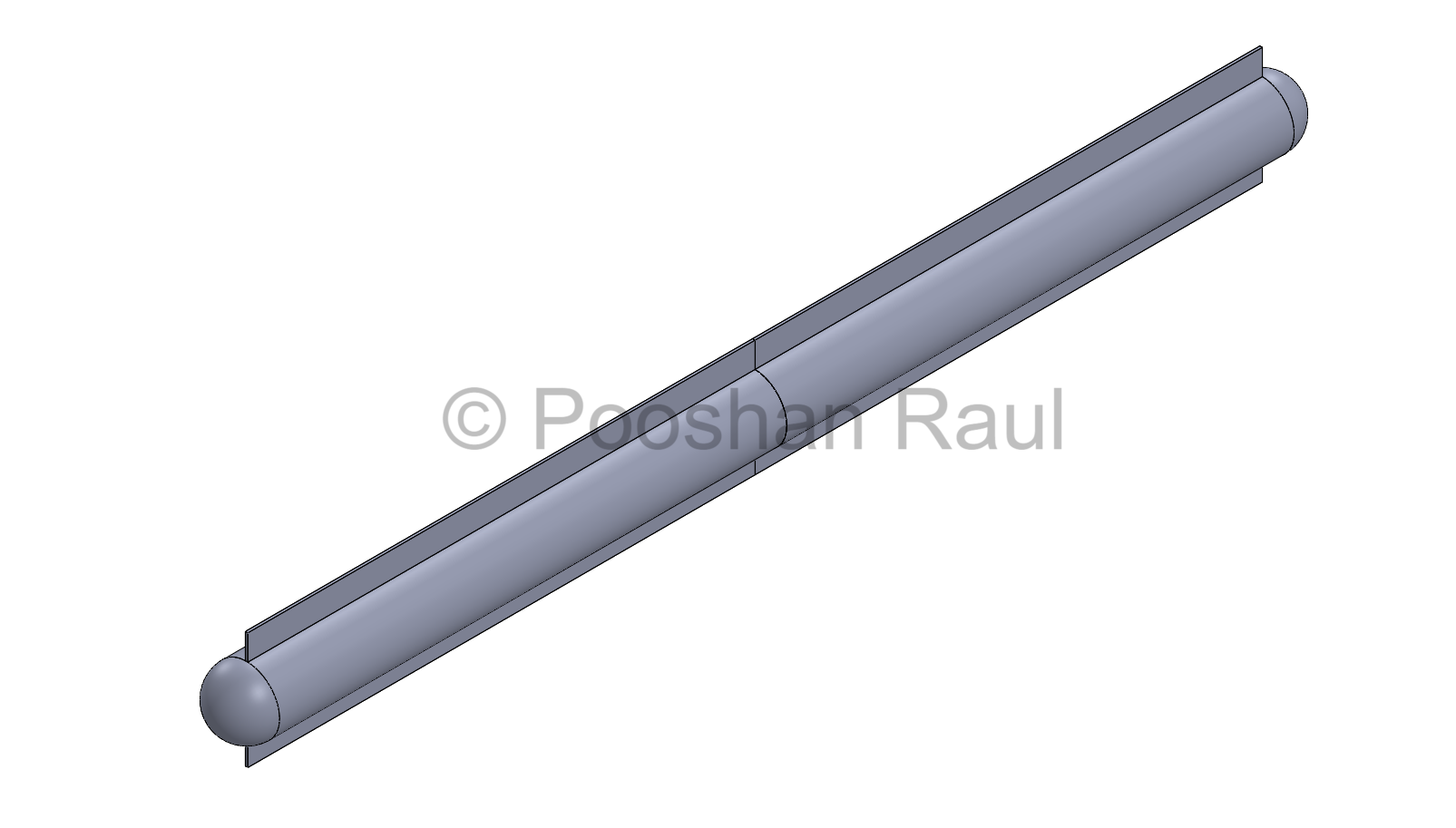
Novel Heat Pipe
The heat pipe is made from 3D-printed molybdenum with internal capillaries lined with lithium. The structure is designed to sustain heat fluxes up to 20 MW/m², resembling conditions found in tokamaks.
- Operates on an evaporation–condensation cycle of liquid lithium.
- The pipe is vacuum-sealed to prevent oxidation
- Construction is capable of sustaining temperatures up to 2000 °C.
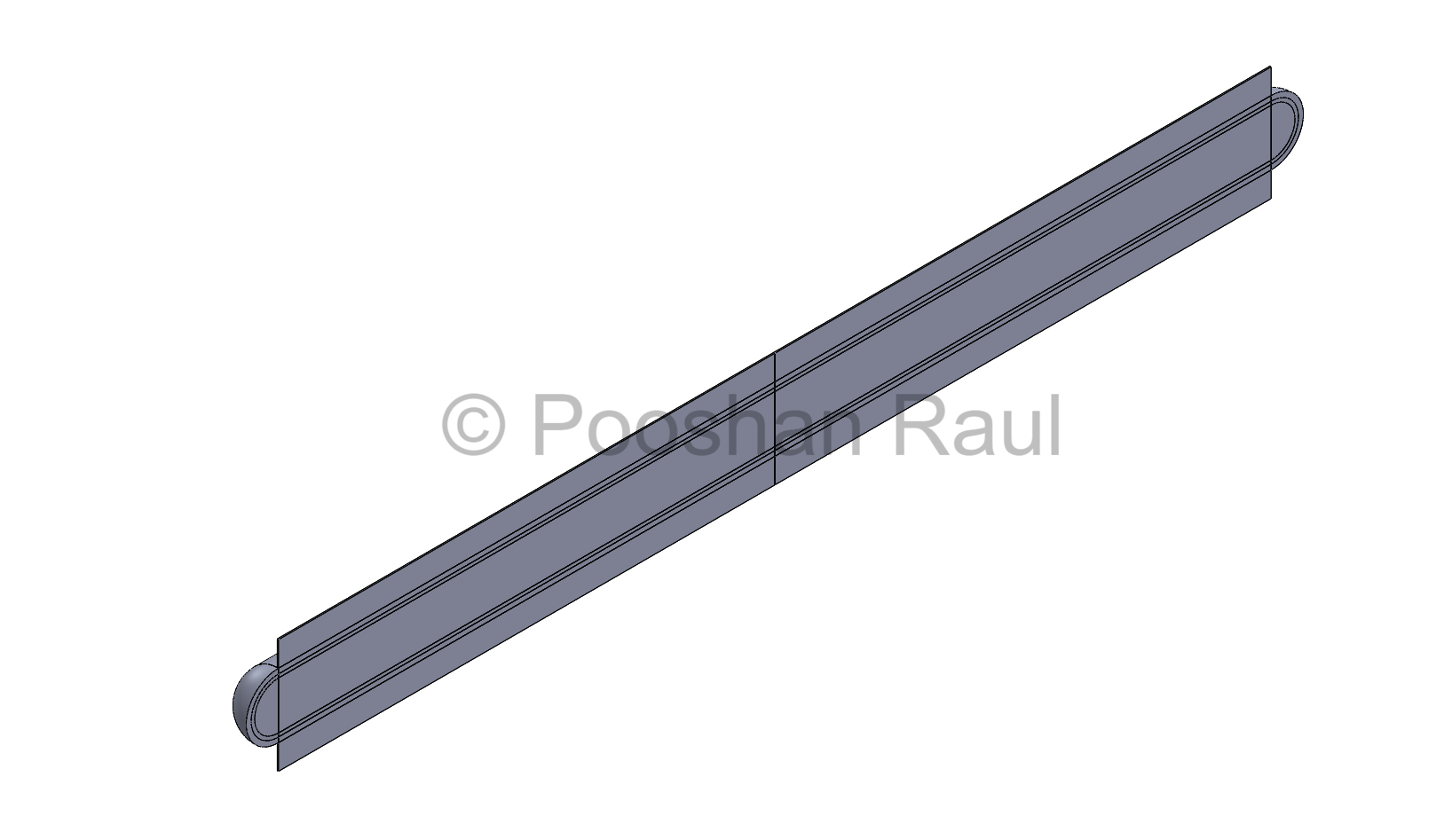
Working Principle
Heat is absorbed at the evaporator region causing lithium to vaporize, and is transported to the condenser end where it recondenses via capillary action. This closed-loop mechanism drives thermal transfer without external flow assistance.
- Vaporization at hot end: ~1600 K peak under high heat flux
- Passive capillary condensation mechanism
- No mechanical pump or active components involved
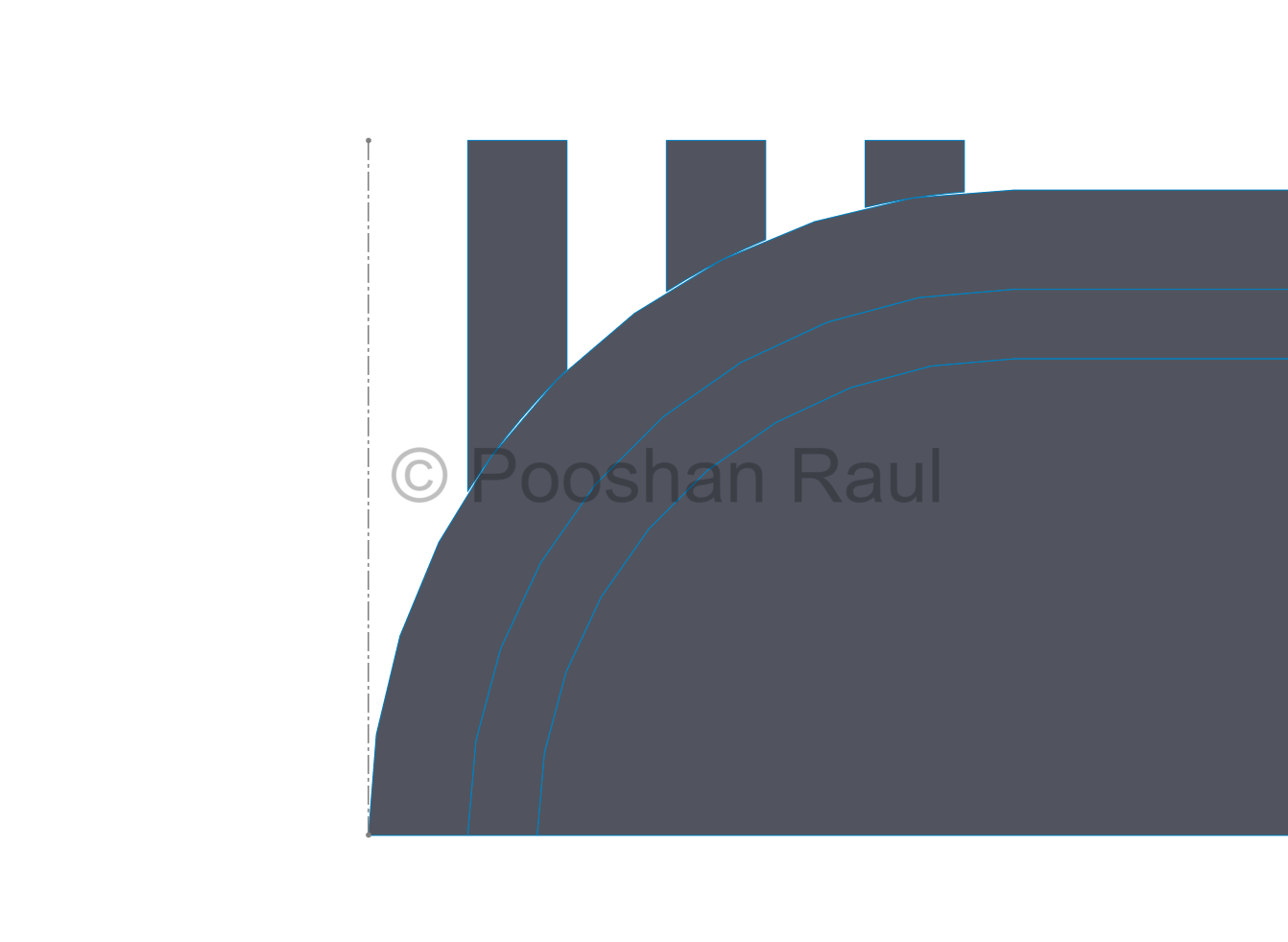
Problem Idealization
To reduce computational cost while preserving physical accuracy, the heat pipe was modeled as a 2D axisymmetric domain. The solid, liquid, and vapor regions were explicitly defined, and multiphase modeling was enabled using the VOF approach.
- Axisymmetric geometry reduced element count
- Multiphase zones defined explicitly for thermal interaction
- VOF model applied to capture vapor–liquid interface dynamics
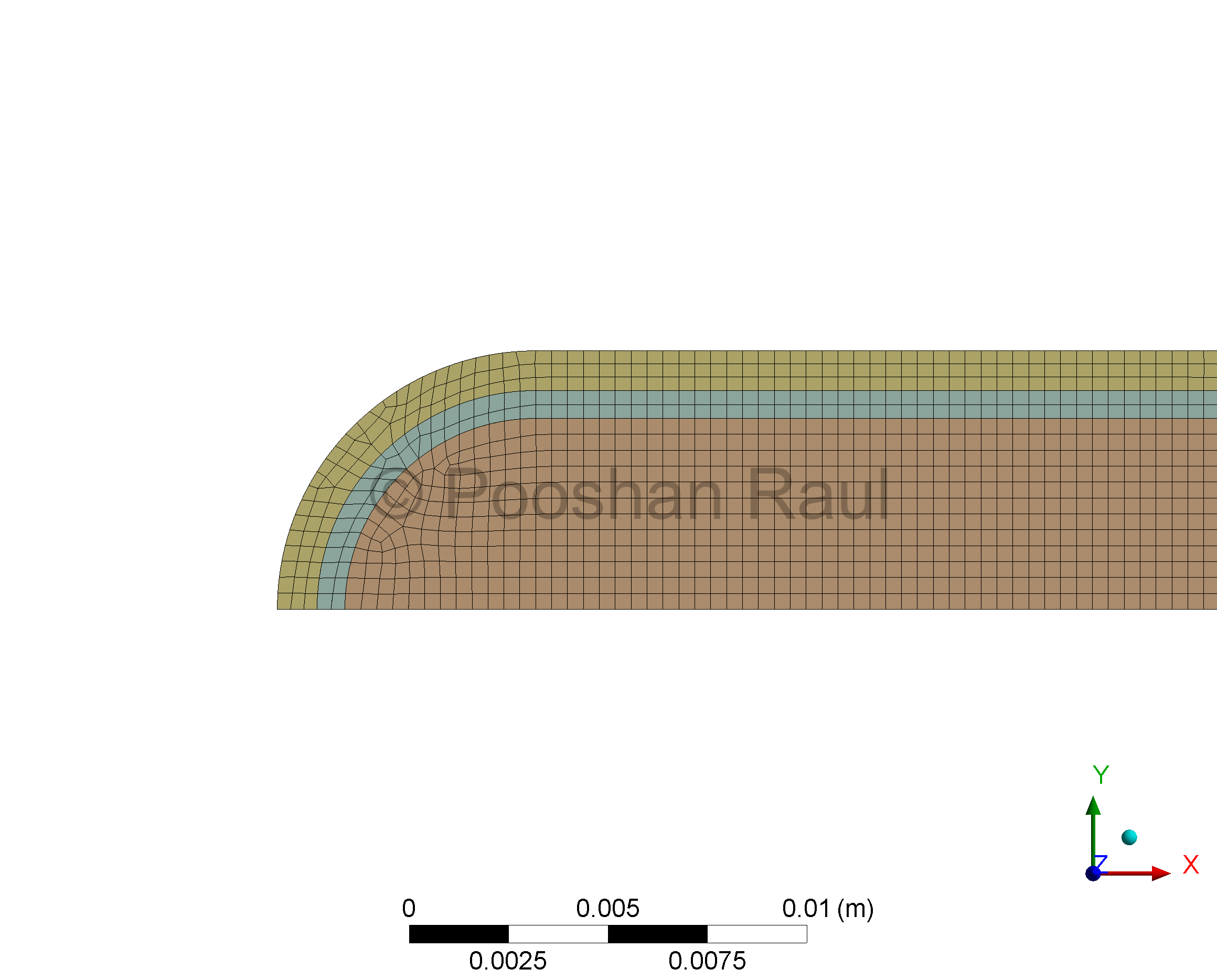
Mesh Refinement & Quality
High mesh quality was ensured to avoid solver instability and increase simulation reliability. Local refinement was applied near the evaporator region where gradients were highest.
- Quadrilateral meshing with 0.4 mm refinement near hot zones
- Skewness ~0.32, orthogonality ~0.74
- No negative volumes or distorted elements observed
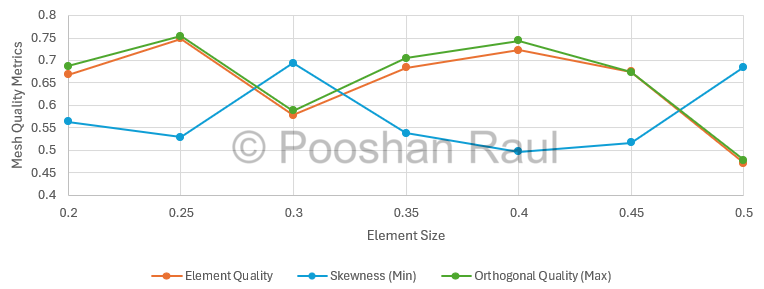
Mesh Metrics
Standard Fluent mesh metrics were evaluated and met convergence safety margins. The mesh was optimized using gradient smoothing and quality checks.
- Aspect ratio < 3 maintained throughout
- Smoothing applied to eliminate stress risers
- Clean topology enabled consistent solver initialization
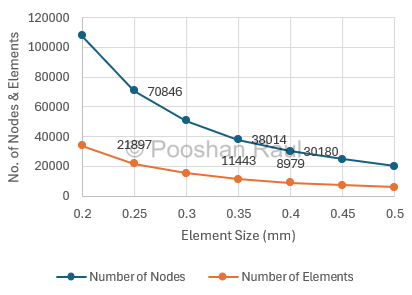
Mesh Convergence Study
A mesh size of 0.4 mm was selected, resulting in approximately 8,500 elements. This configuration provided an optimal balance between mesh quality and computational efficiency, with improved element skewness and acceptable solver runtime.
- Focused on optimum balance between the simulation process and convergence.
- Grid convergence index within acceptable tolerance
- Final mesh used for all thermal post-processing
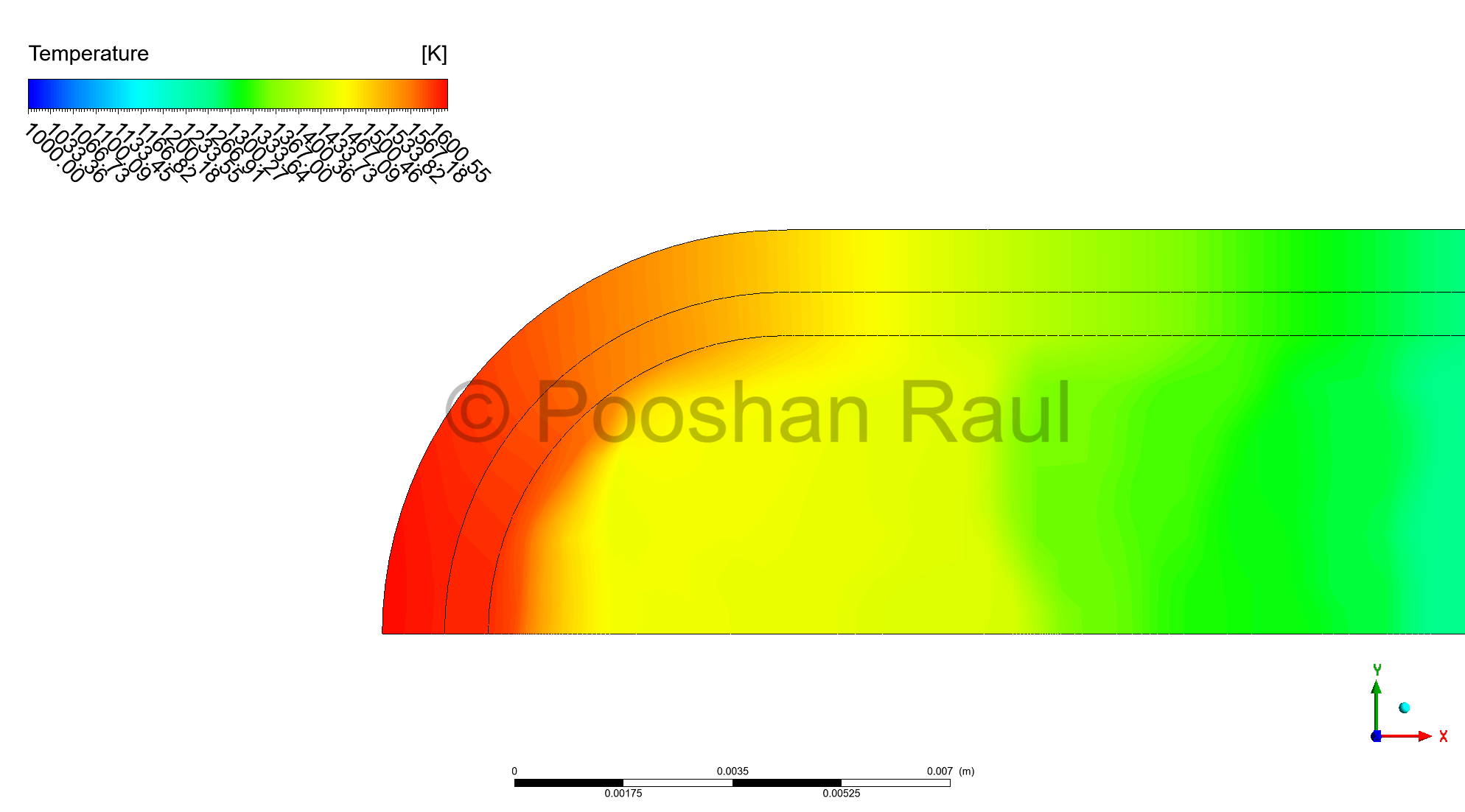
Temperature Results
Peak surface temperatures (~1600 K) matched reference COMSOL data from TU Eindhoven.
- Localized peaks at evaporator edge and mid-wick
- Stable axial drop toward condenser confirmed
- Temperature evolution tracked over 12.3 s of transient simulation.
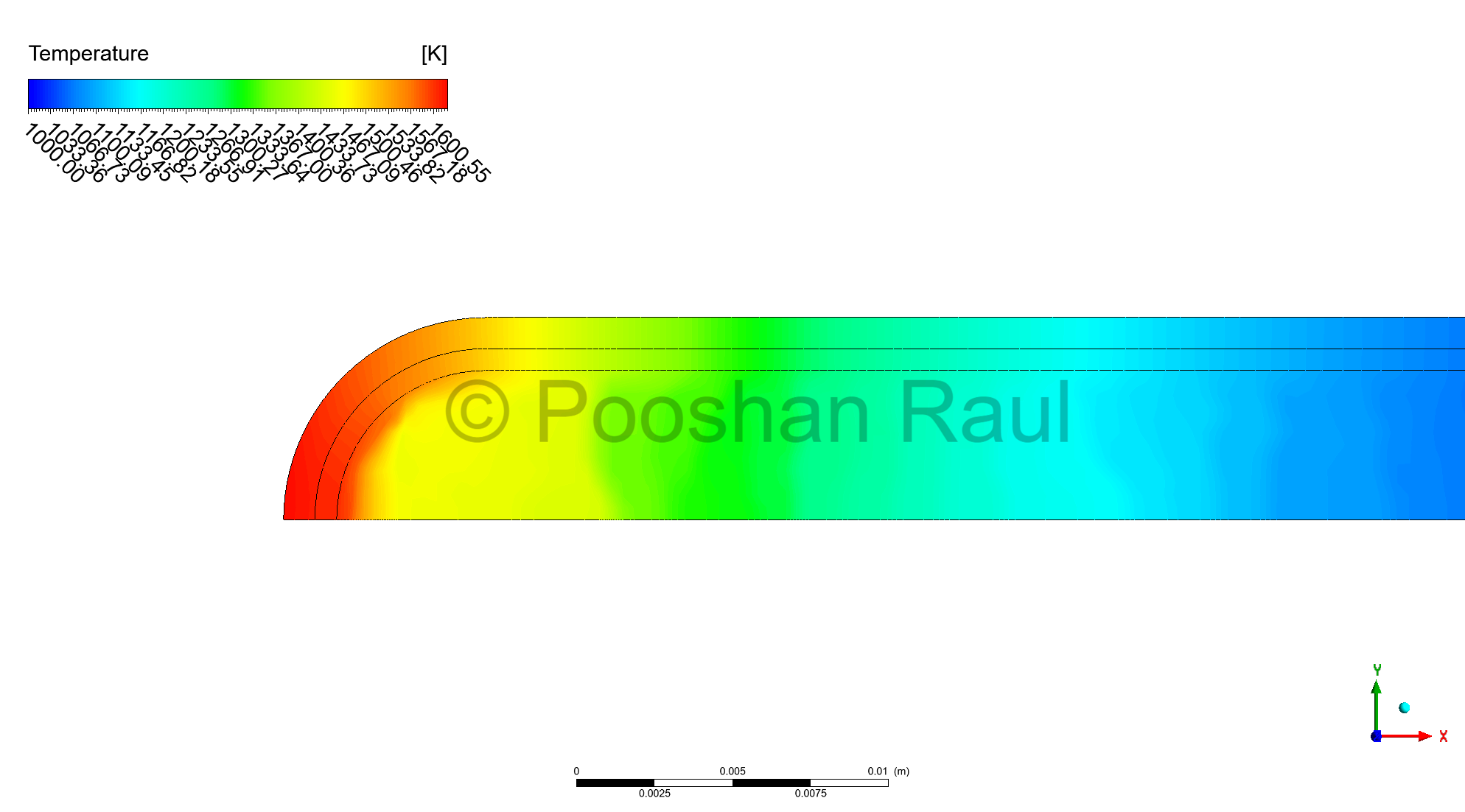
Cross-Validation
Temperature field matched benchmark thermal data despite simplified phase boundaries.
- Early-transient agreement up to 12.3 s before solver divergence.
- Temperature trends consistent with COMSOL baseline, even in 2D axisymmetric model.
- Minor deviation near the liquid–vapor interface due to mesh/time-step sensitivity.
Conclusion
This study validates a reduced-order CFD approach for fusion-grade heat pipe behaviour. Results were consistent with benchmark data during the stable transient window, demonstrating that a 2D axisymmetric model can provide reliable thermal trends with reduced computational cost. Future work will focus on stabilising full VOF runs through finer interface resolution, tighter Courant control, and incorporating complex physics such as wick porosity, UDF-based heat flux magnitude, and phase-change source terms.
Future Work
- Extend simulation runtime by improving interface stability (smaller time steps, tighter Courant number, refined mesh near interface).
- Introduce wick porosity models and UDF-based source terms for heat flux and phase-change.
- Use validated 2D axisymmetric setup as a computationally efficient baseline before scaling to full 3D with enhanced physics.
Project Summary & CFD Workflow
A novel heat pipe geometry was simulated for use in fusion applications. Axisymmetric simplification reduced computational demand while retaining heat transfer accuracy. The Fluent model was validated against benchmark COMSOL results, demonstrating good thermal correlation despite phase simplification.
SolidWorks Geometry → 2D Domain Setup → inserting Temperature dependent material properties → Mesh Quality Checks → Thermal Load Simulation → Fluent Post-Processing → COMSOL Cross-Validation
Project Information
- Project Date: August 2024
- Software: ANSYS Fluent, SolidWorks
- Category: Research & Development
- Focus: Fusion, Thermo-fluid Simulation, Heat Pipe Design
Let's Connect!
Feel free to reach out to me via Email or LinkedIn.